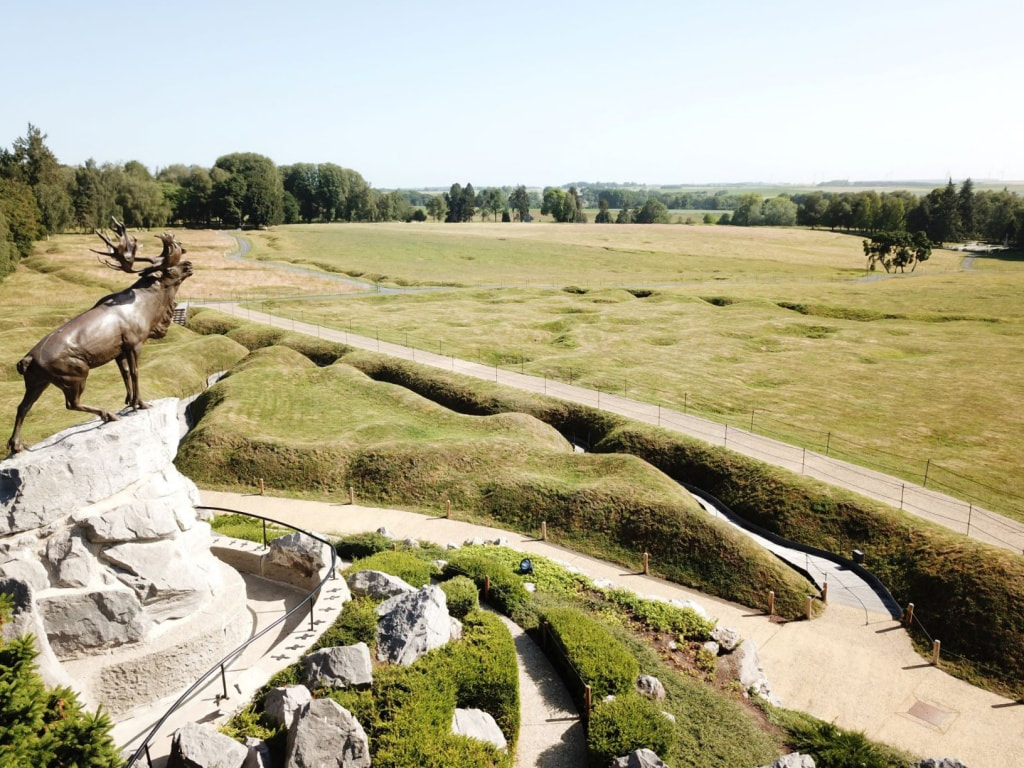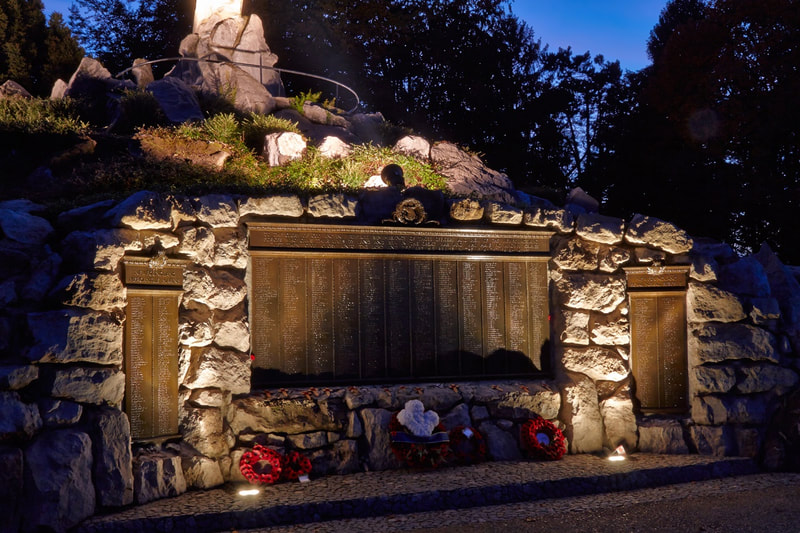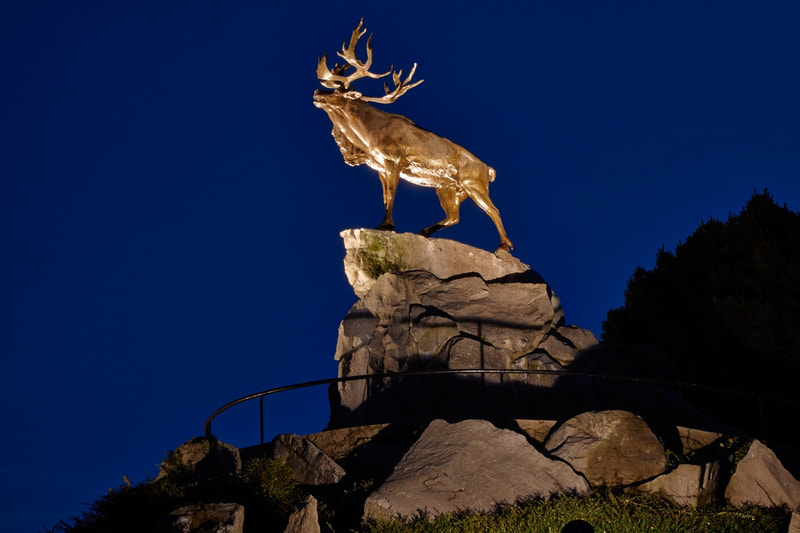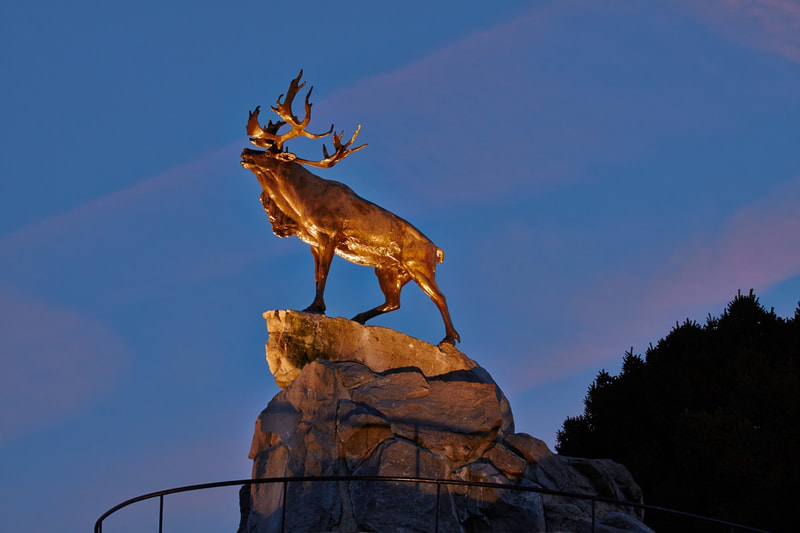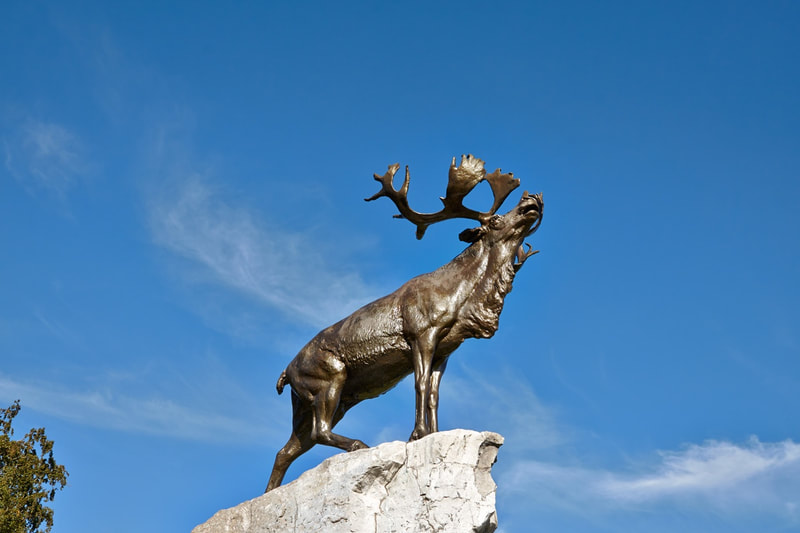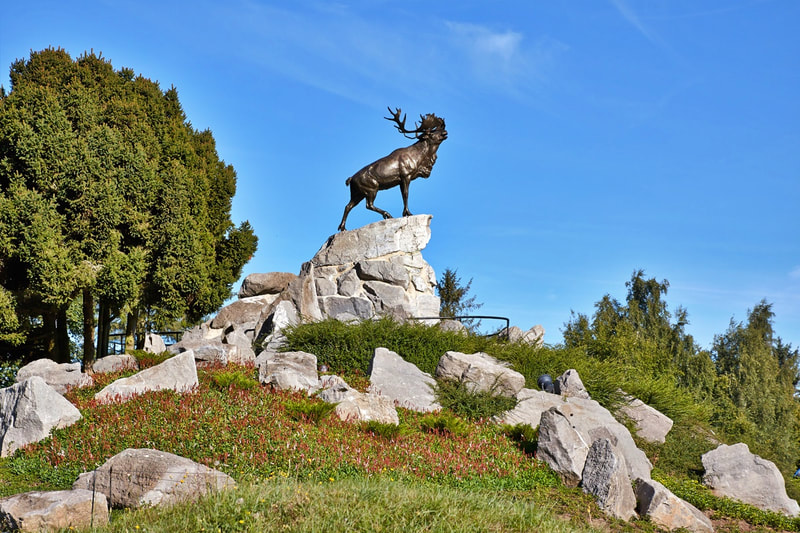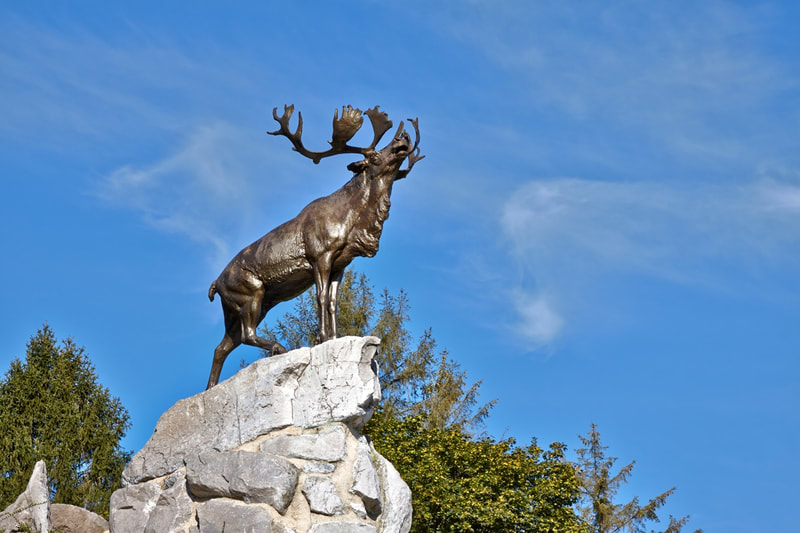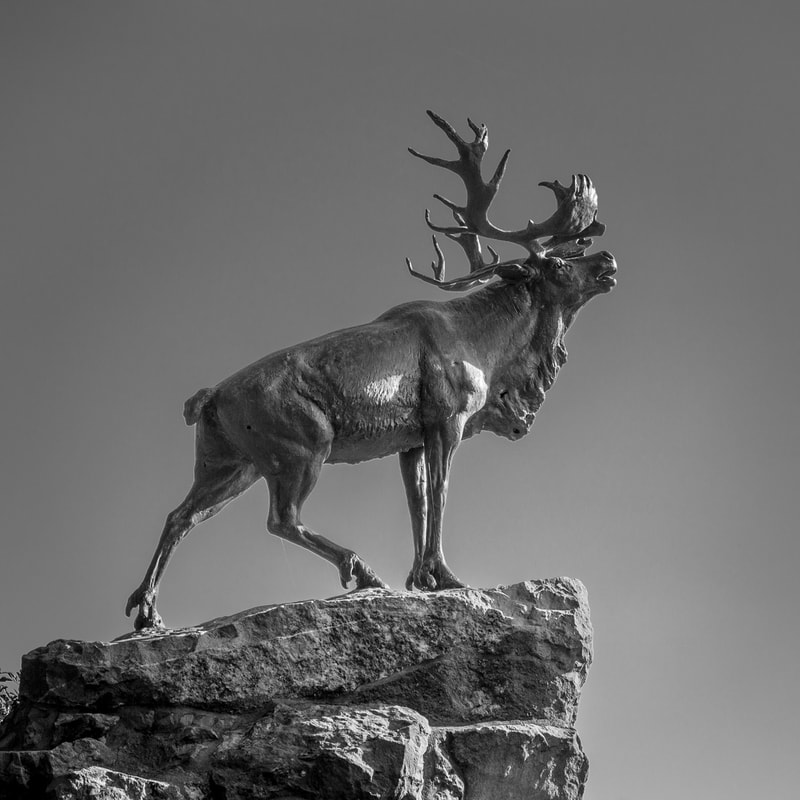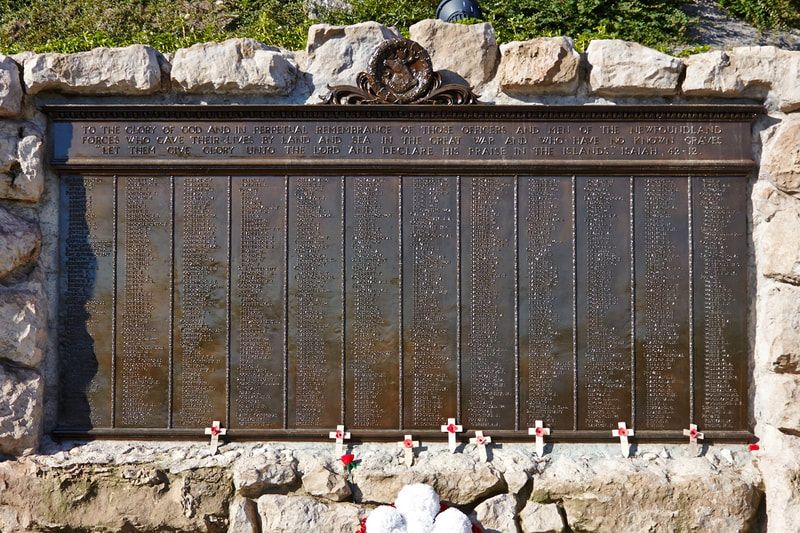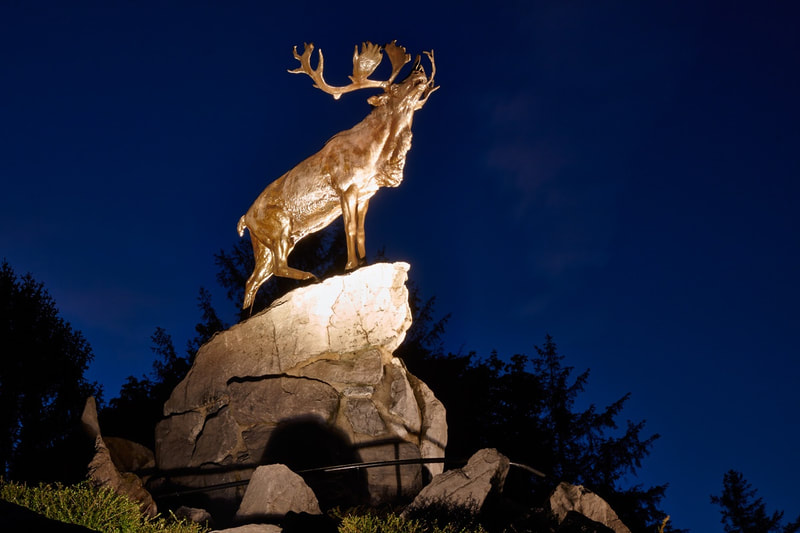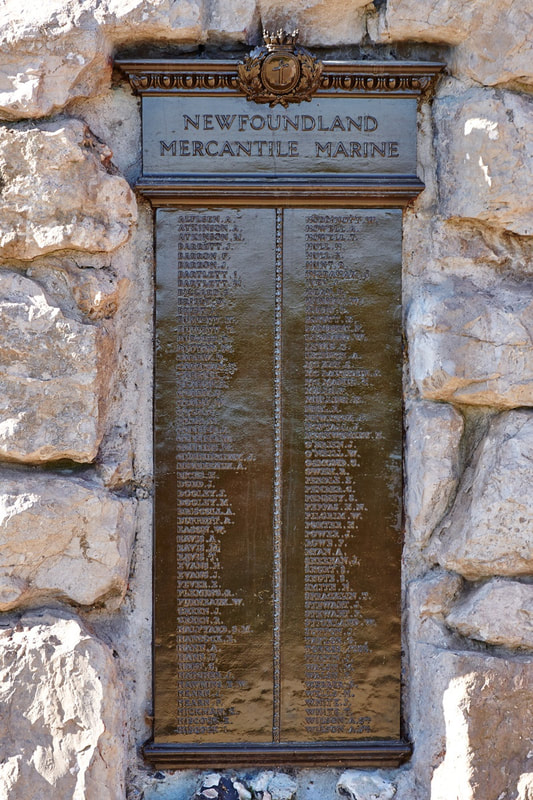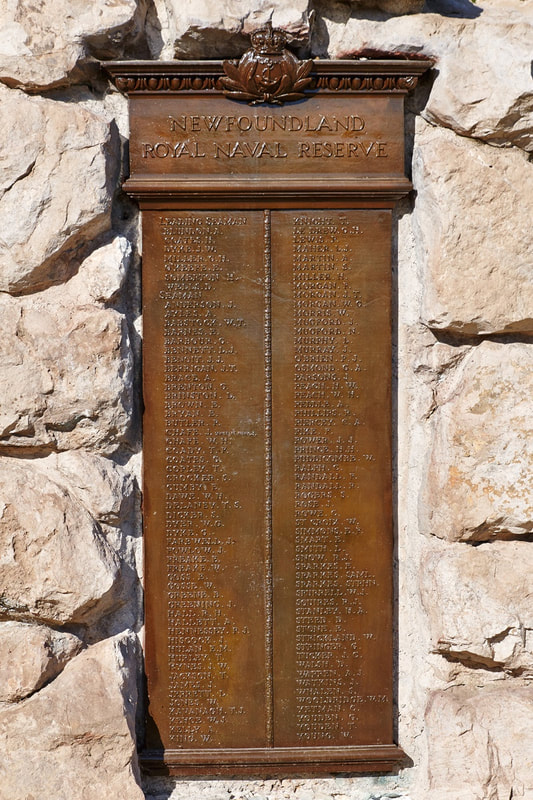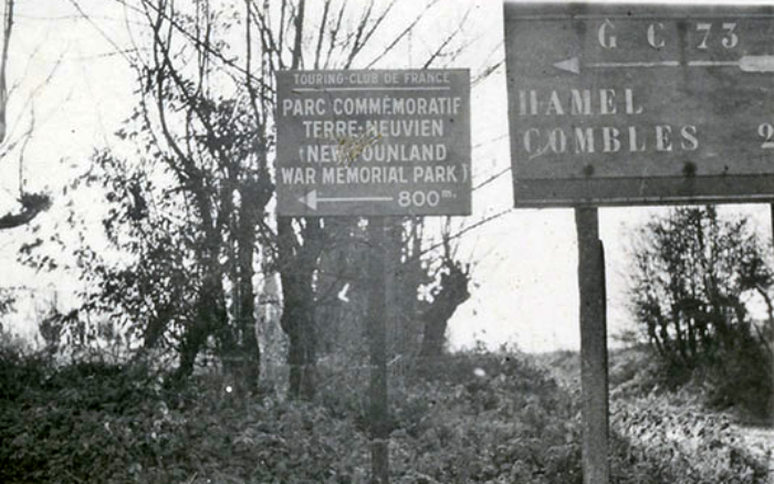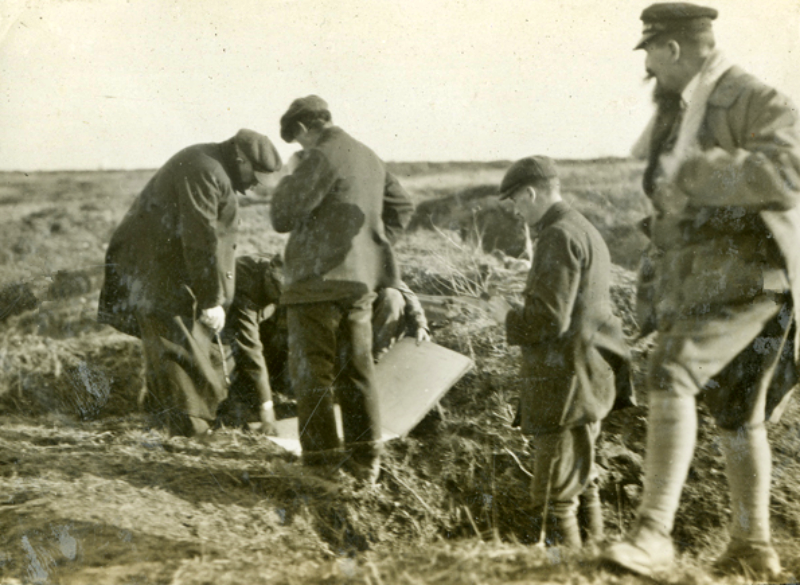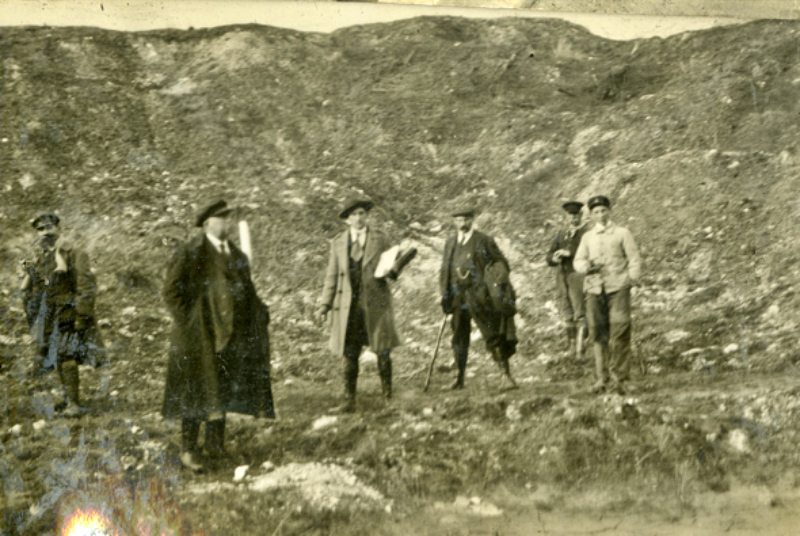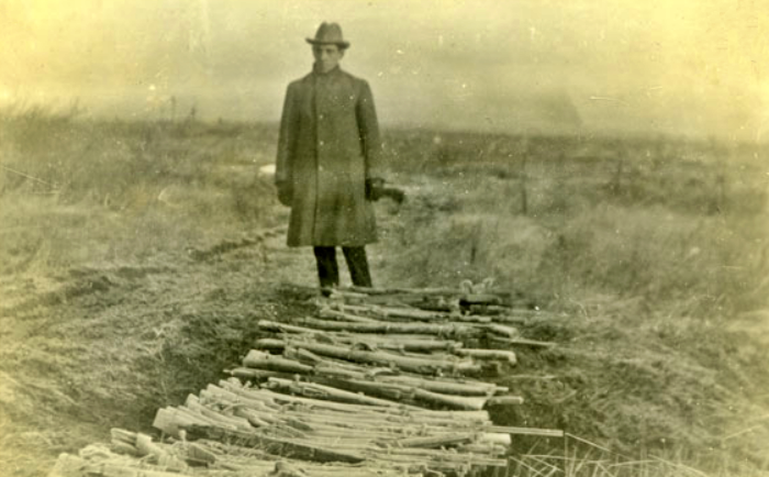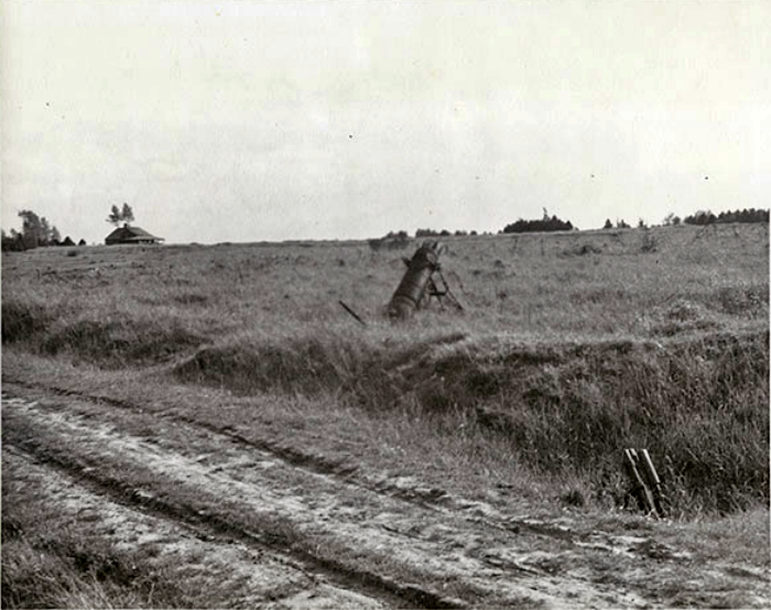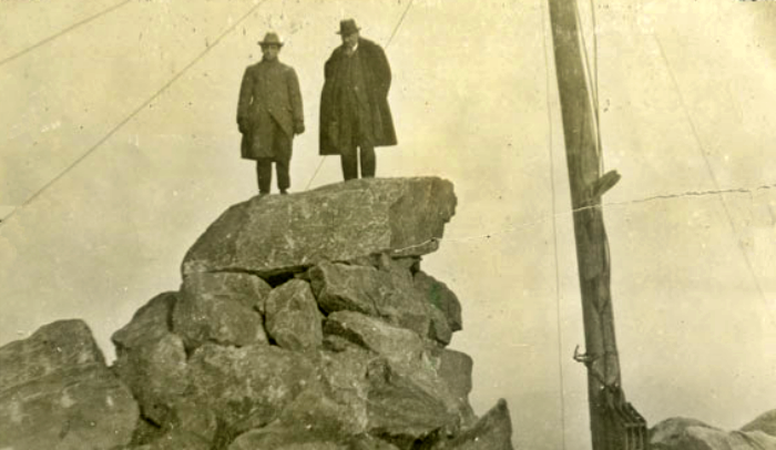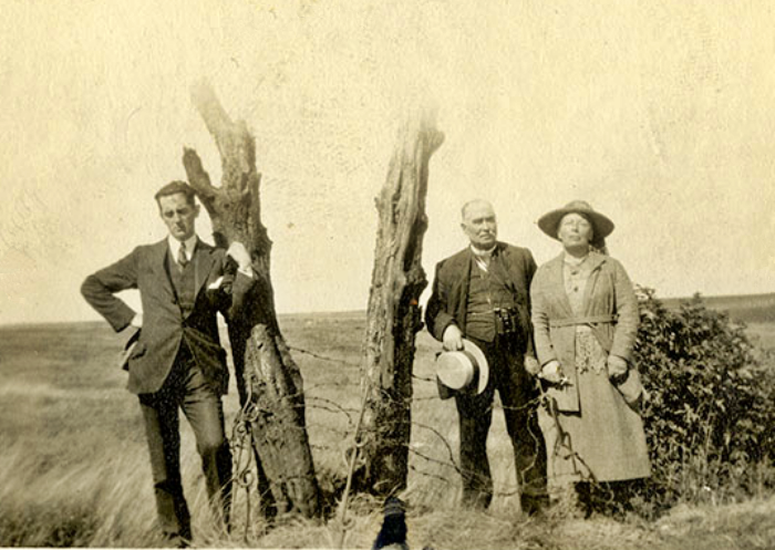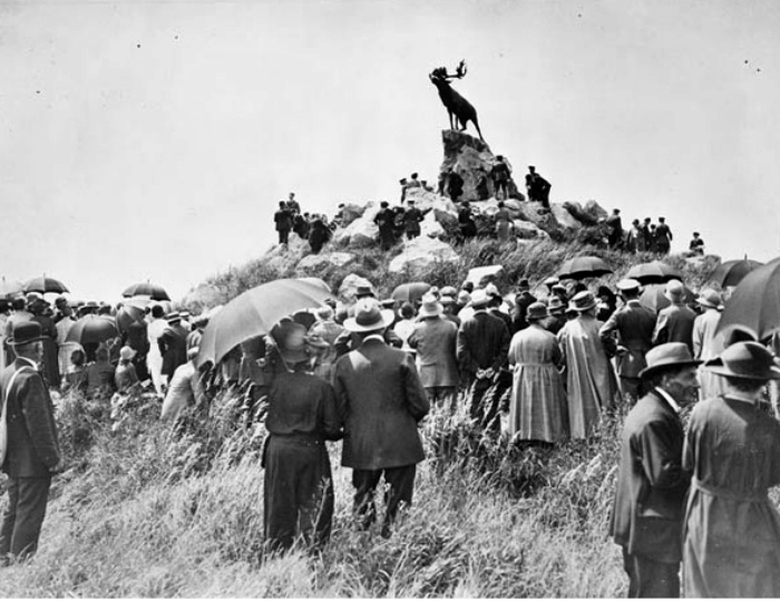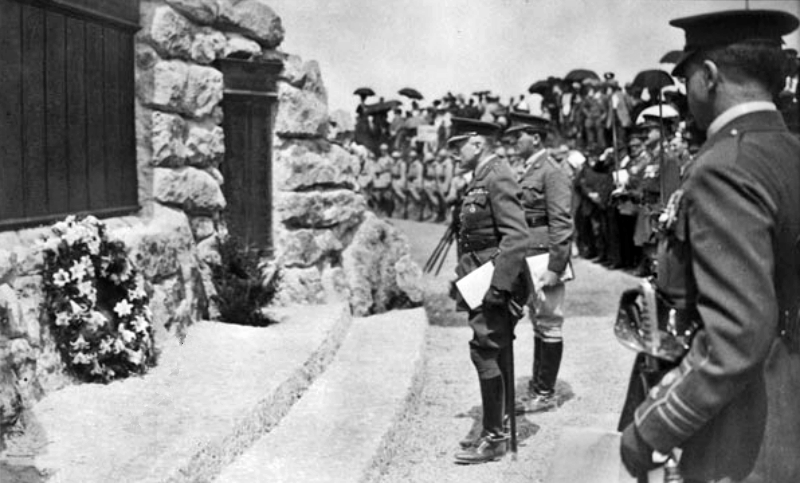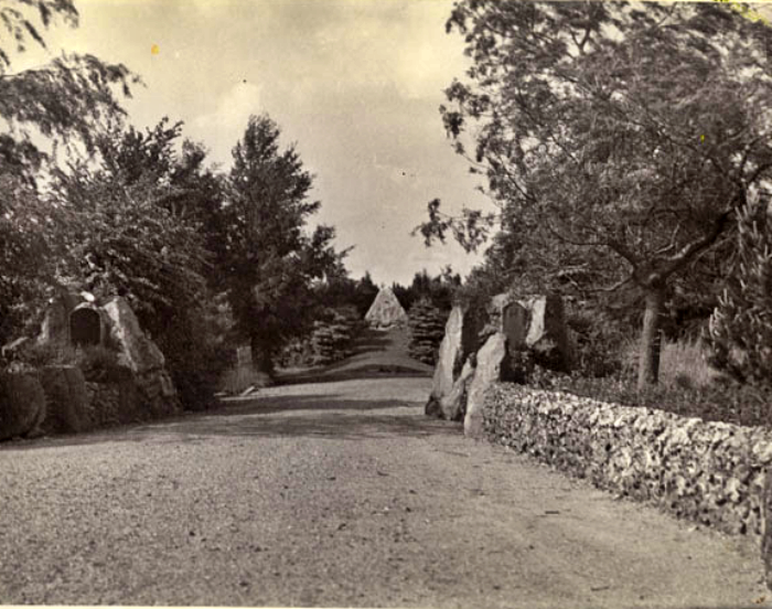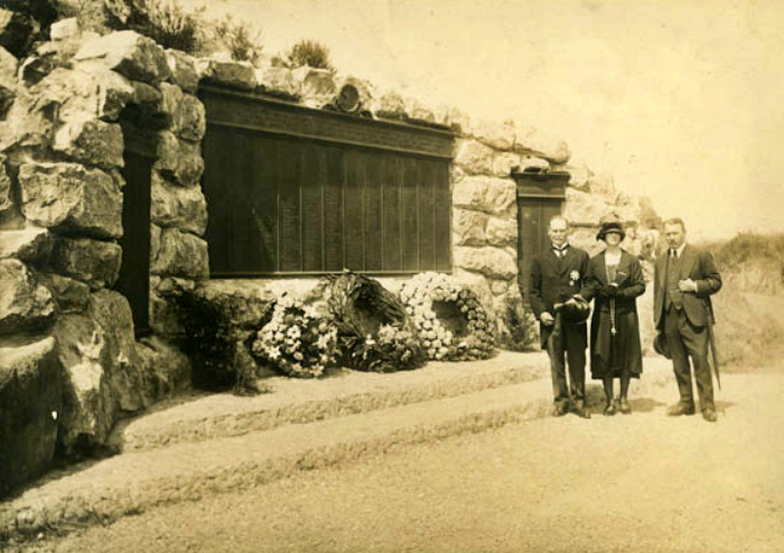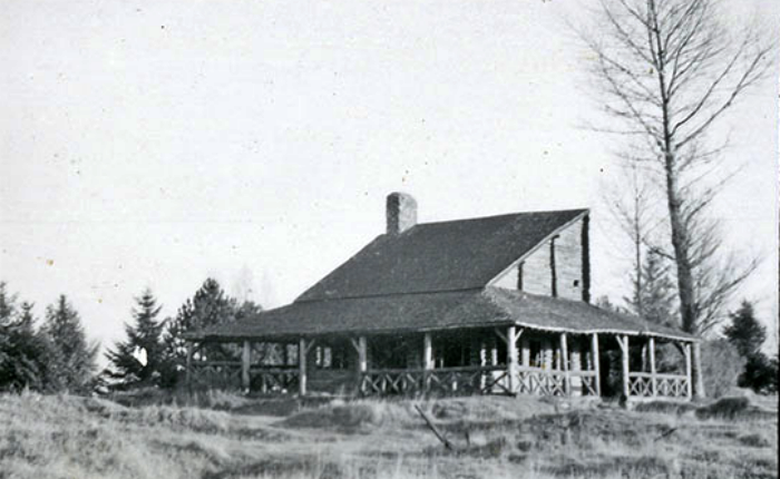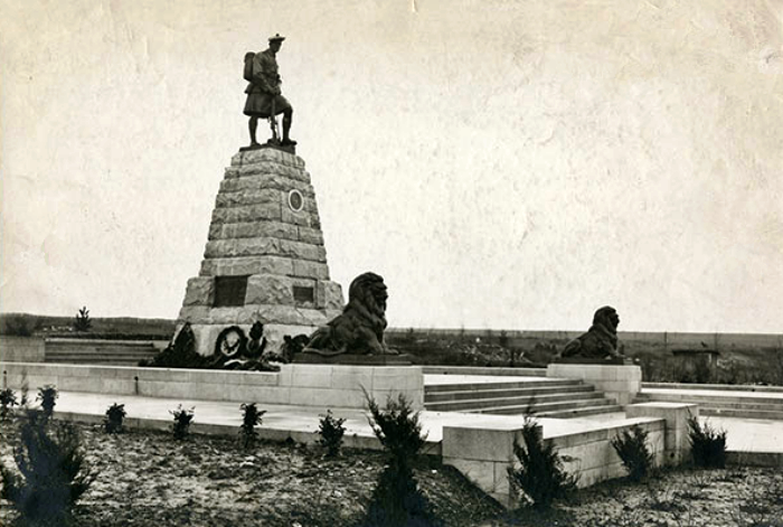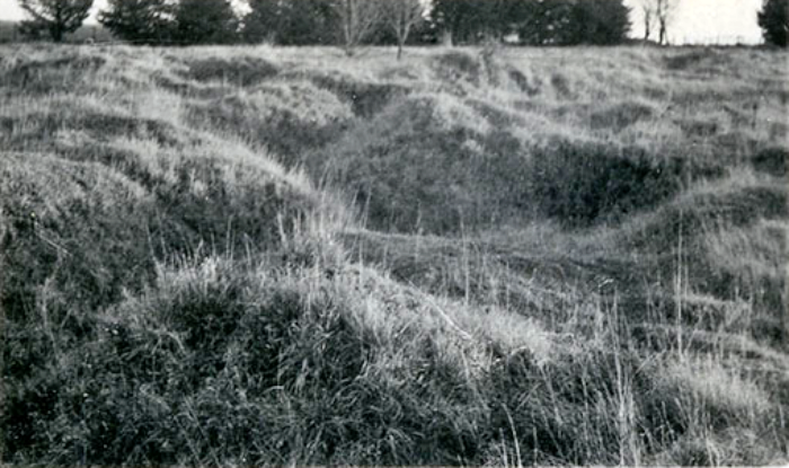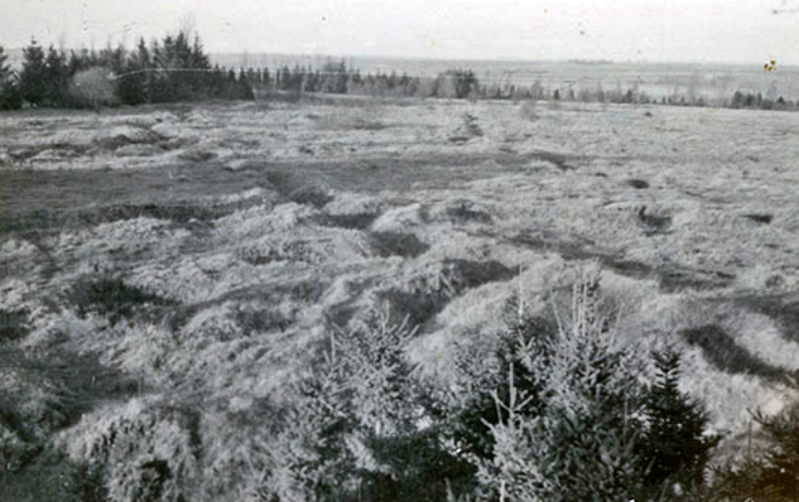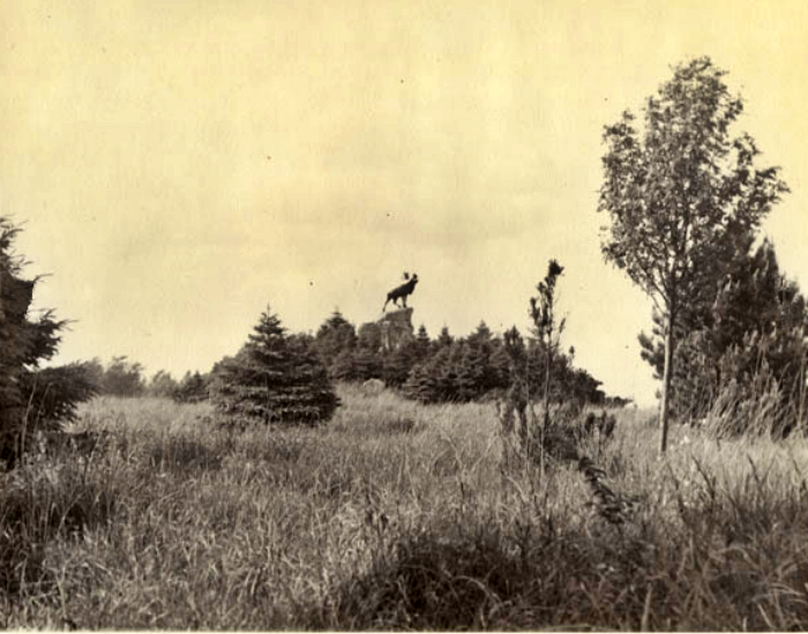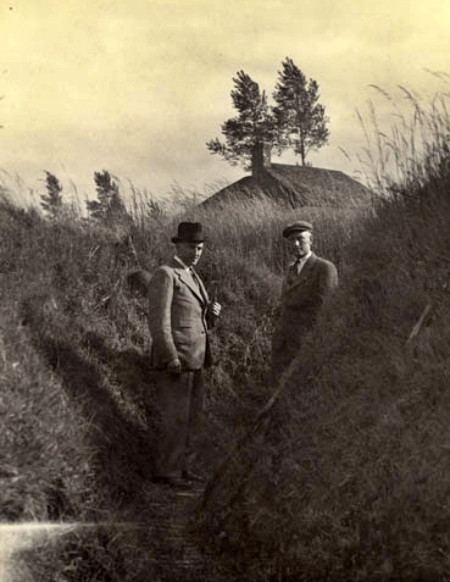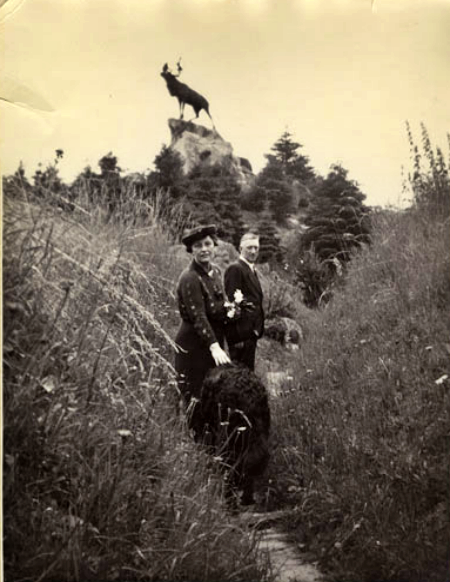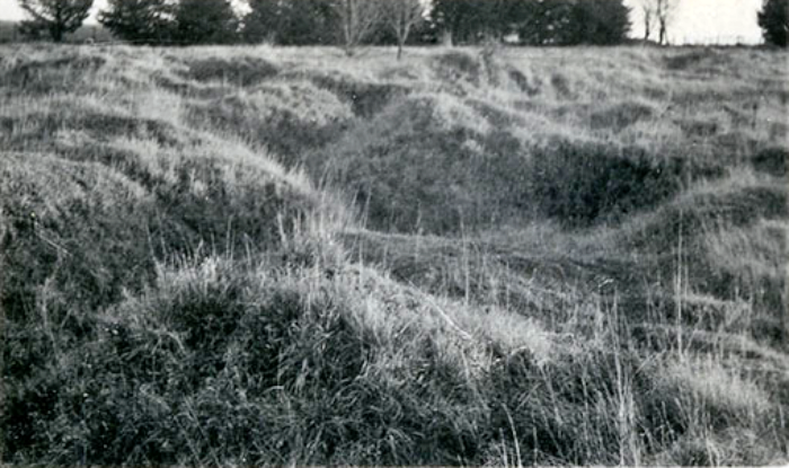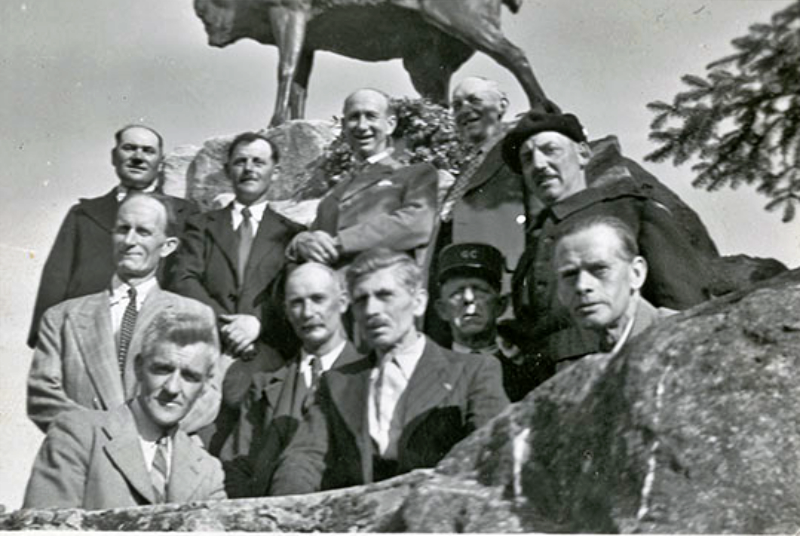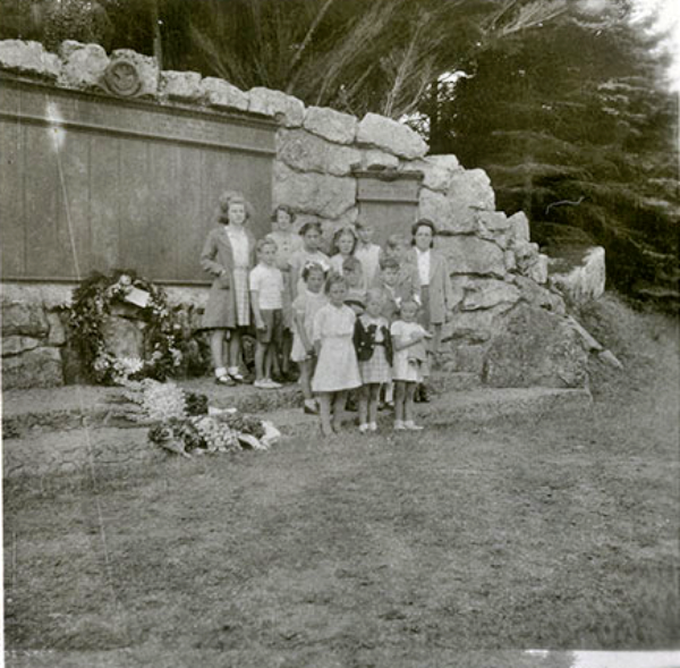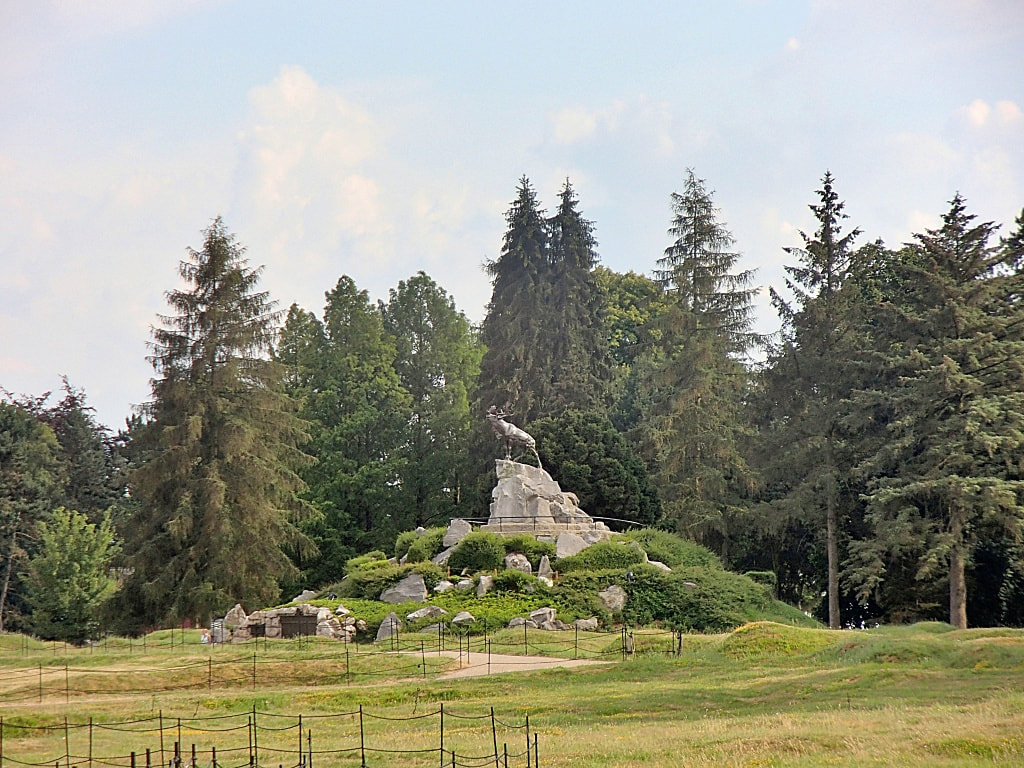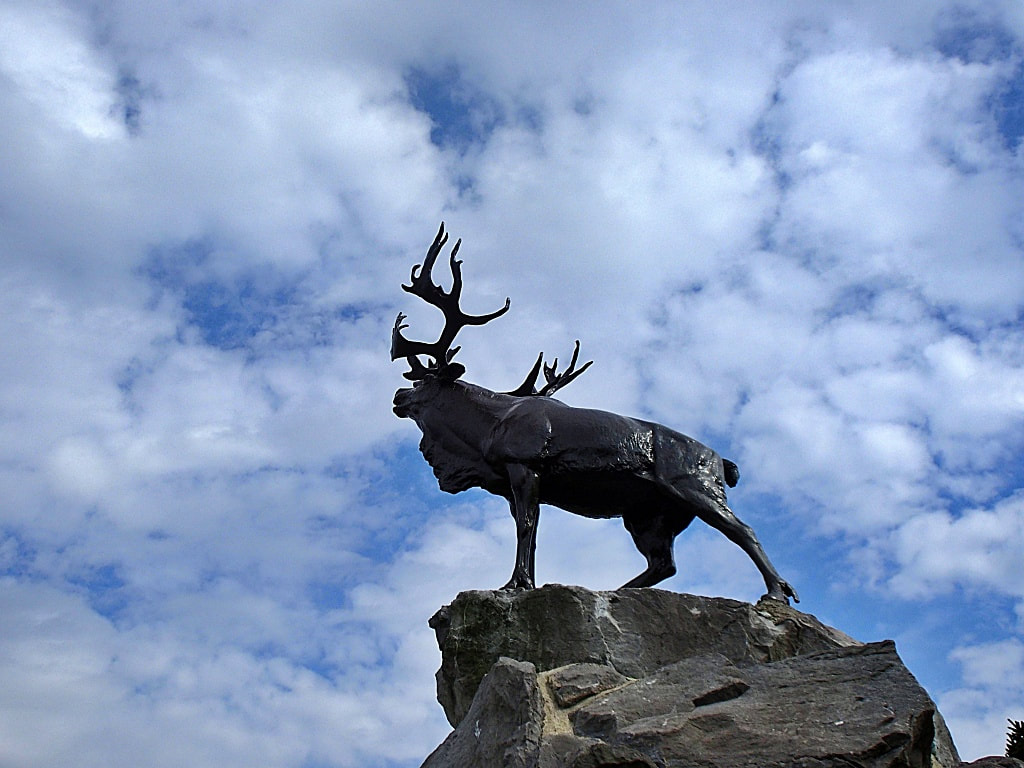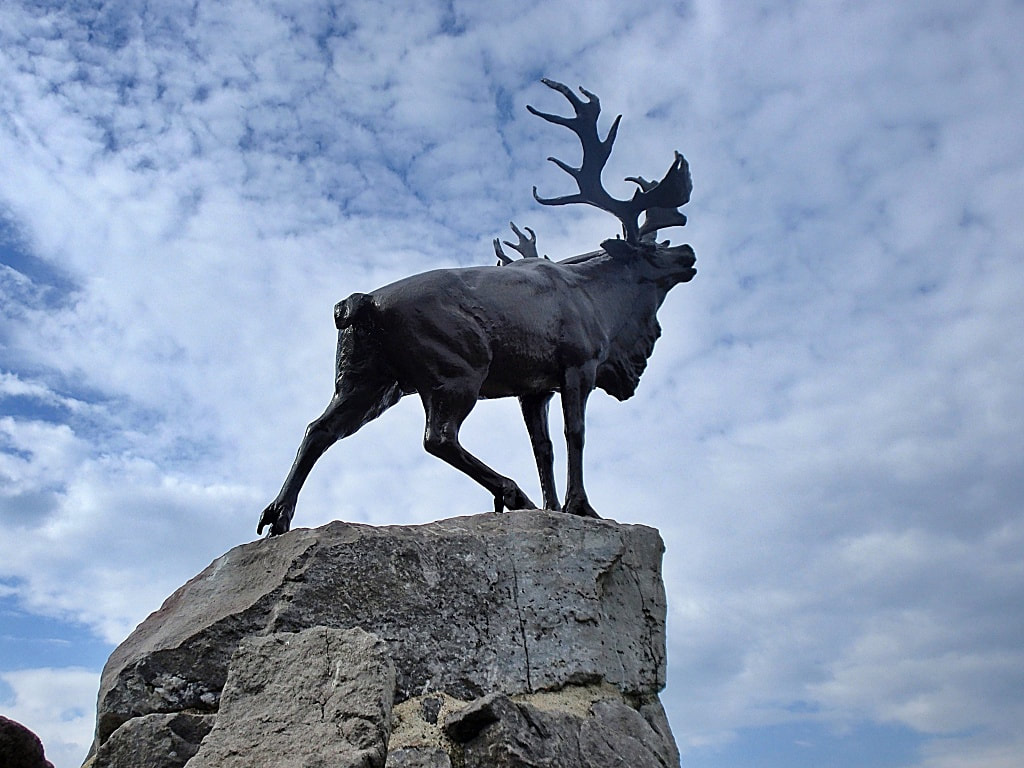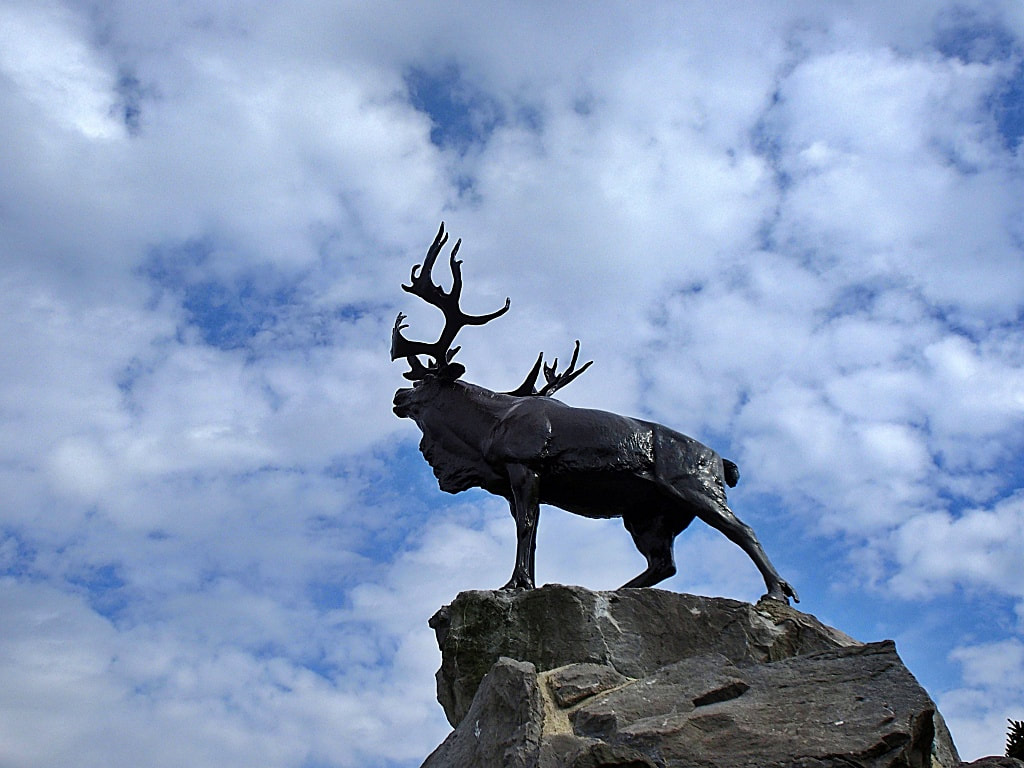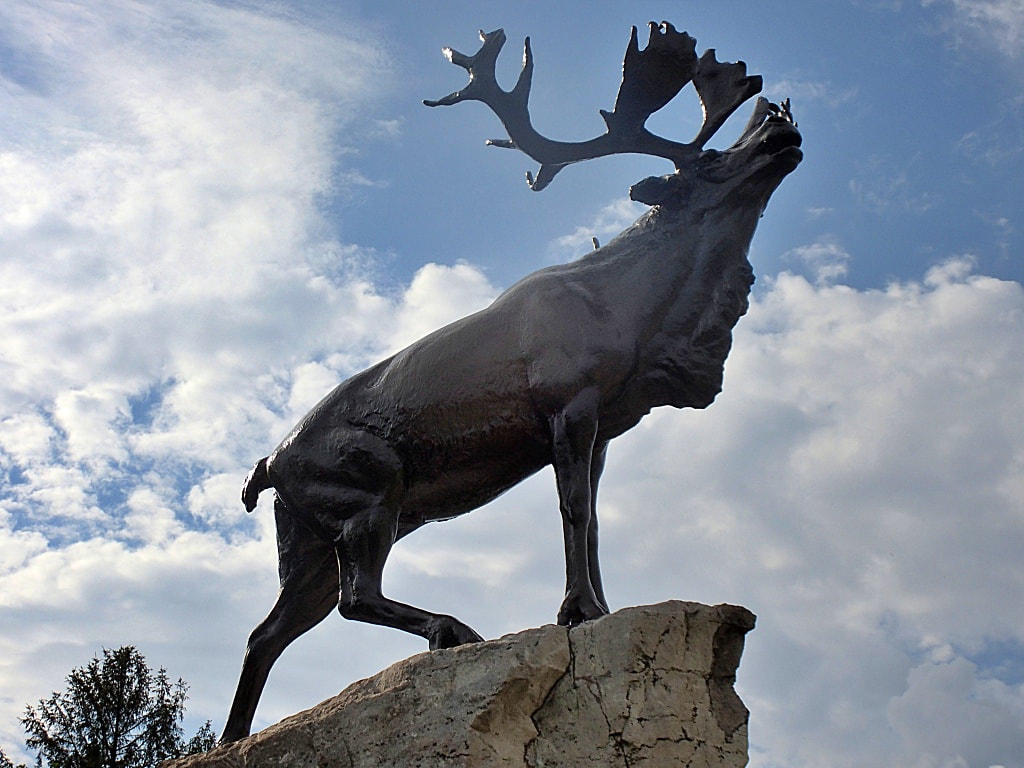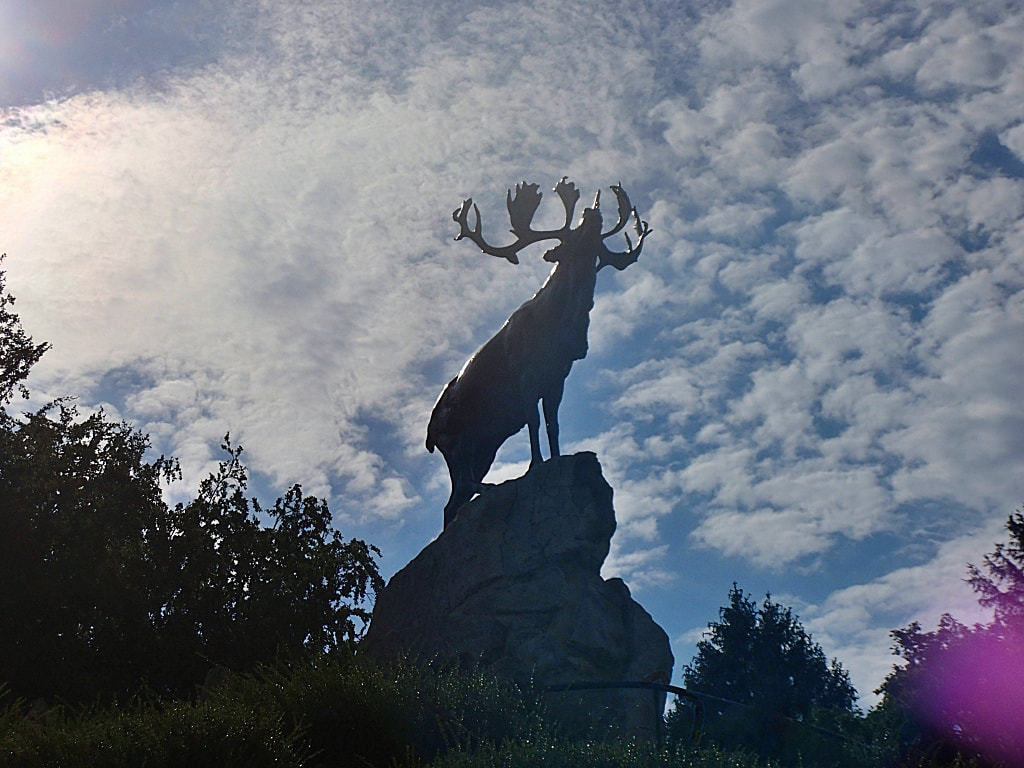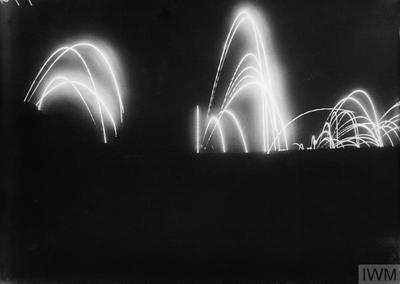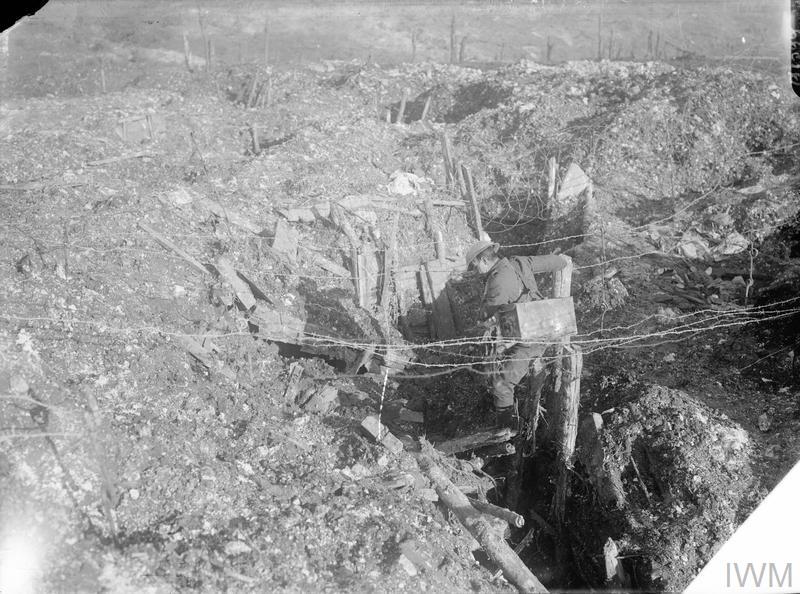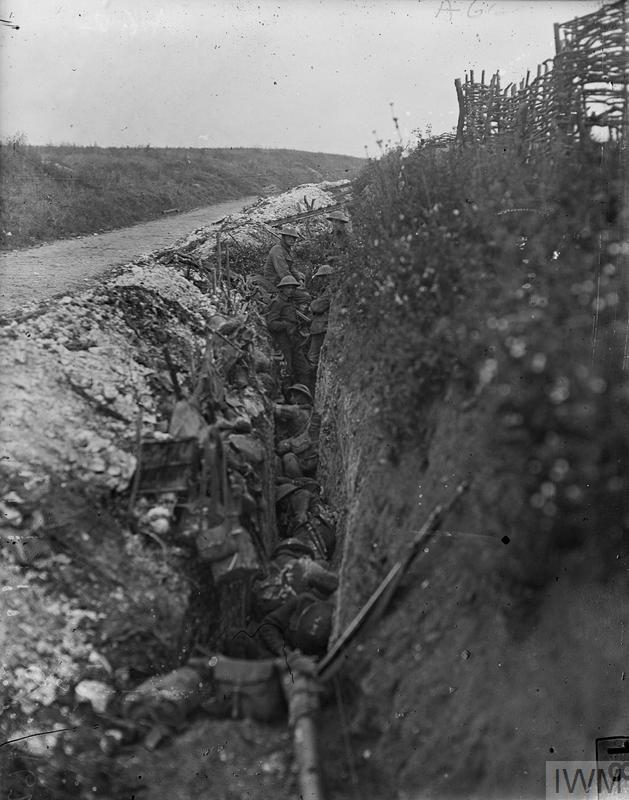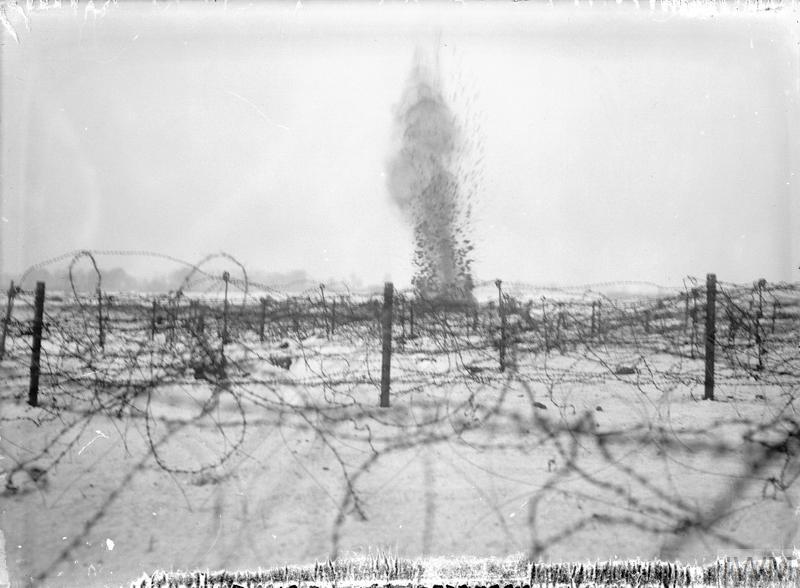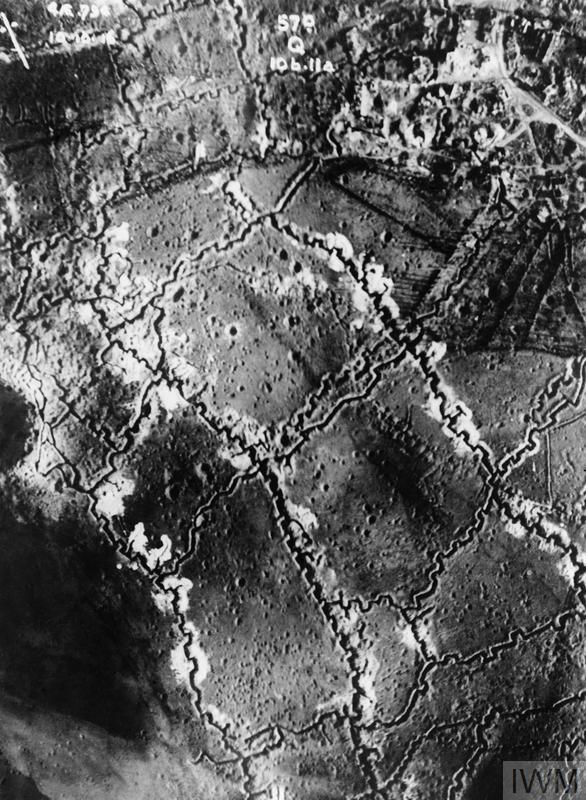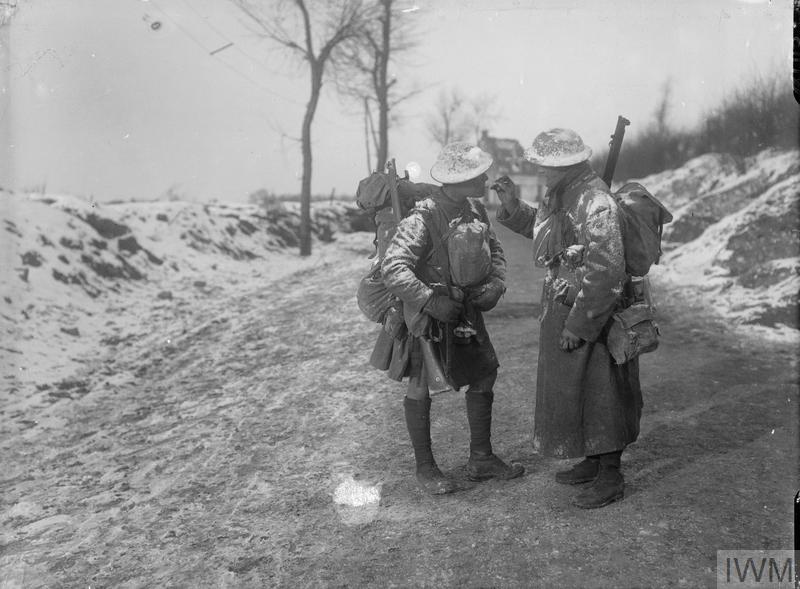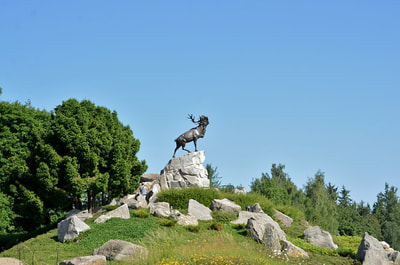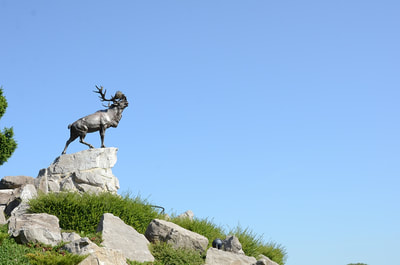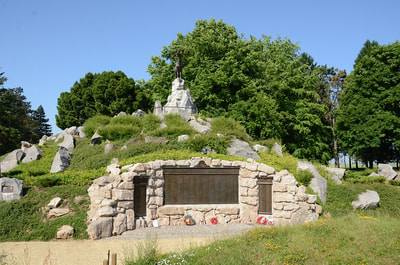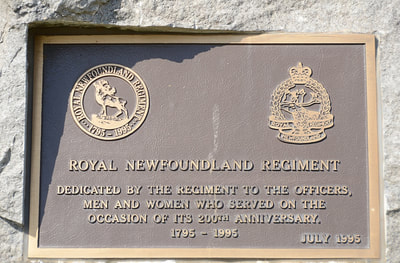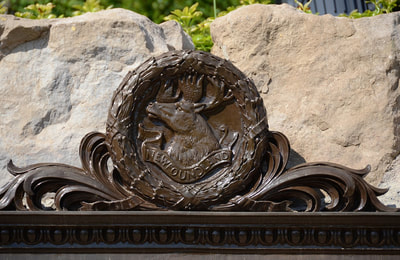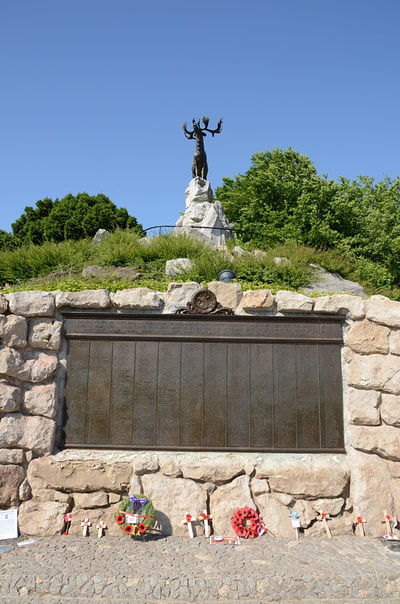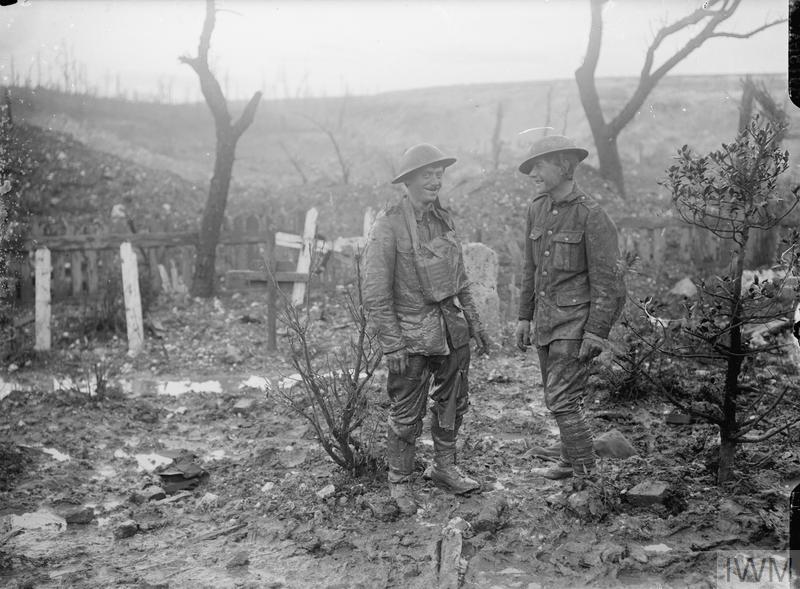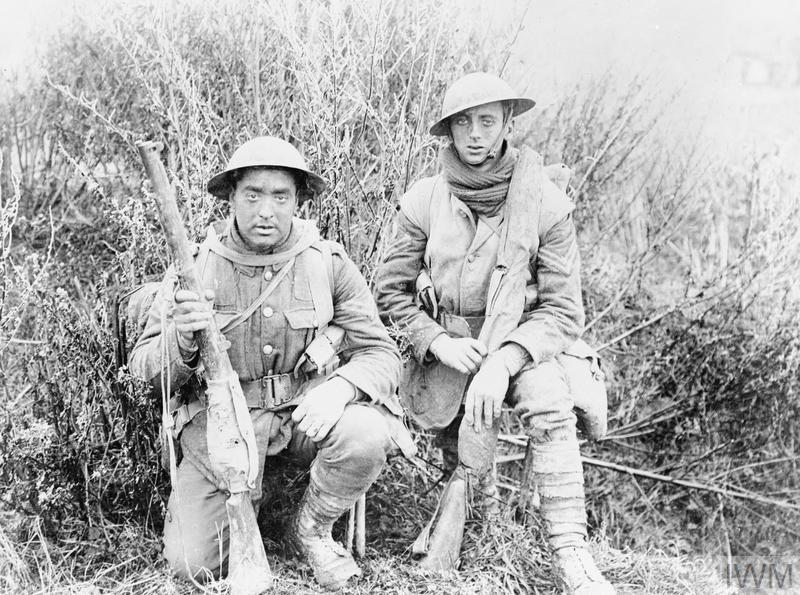BEAUMONT-HAMEL (NEWFOUNDLAND) MEMORIAL
Somme
France
GPS Coordinates - Latitude: 50.07391, Longitude: 2.64837
Image above © Carl Liversage @carl_liversage
Information
Beaumont-Hamel Memorial Park, situated 9 kilometres directly north of the town of Albert, was establish in memory of Newfoundlanders who fell in the First World War.
Using the D919 from Arras to Amiens you will drive through the villages of Bucquoy, Puisieux then Serre Les Puisieux (approximately 20 kilometres south of Arras). On leaving Serre Les Puisieux, 3 kilometres further along the D919, turn left following the signs for Auchonvillers. At the crossroads in the village centre follow the signs for 'Newfoundland Park, Beaumont Hamel'.
Historical Information
Beaumont-Hamel was attacked by the 29th Division on 1 July 1916 and although some units reached it, the village was not taken. It was finally captured by the 51st (Highland) and 63rd (Royal Naval) Divisions on the following 13 November.
The 29th Division included the 1st Battalion of the Newfoundland Regiment, as it was then called. The attack on Beaumont-Hamel in July 1916 was the first severe engagement of the regiment, and the most costly. On the first day of the Battle of the Somme, no unit suffered heavier losses than the Newfoundland Regiment which had gone into action 801 strong. The roll call the next day revealed that the final figures were 233 killed or dead of wounds, 386 wounded, and 91 missing. Every officer who went forward in the Newfoundland attack was either killed or wounded. For this reason, the government of Newfoundland chose the hill south-west of the village, where the front-line trenches ran at the time of the battle, as the site of their memorial to the soldiers (and also to the sailors) of Newfoundland.
Of the few battlefield parks in France and Belgium where the visitor can see a Great War battlefield much as it was, Beaumont Hamel is the largest. The actual trenches are still there and something of the terrible problem of advancing over such country can be appreciated by the visitor.
The memorial itself stands at the highest point of the park and consists of a great caribou cast in bronze, emblem of the Royal Newfoundland Regiment. At the base, three tablets of bronze carry the names of over 808 members of the Royal Newfoundland Regiment, the Newfoundland Royal Naval Reserve and the Newfoundland Mercantile Marine, who gave their lives in the First World War and who have no known grave. Erroneously included on the memorial is the name of W. Pilgrim who survived the war and whose details will not appear within the C.W.G.C. records.
The memorial designed by R.H.K. Cochius, with sculpture by Basil Gotto. It was unveiled by Earl Haig on 7 June 1925.
Commemorated on the Memorial: Canada (Newfoundland) 808.
Within the Park are three British Cemeteries
Hawthorn Ridge Cemetery No. 2
"Y" Ravine Cemetery
Hunter's Cemetery
Beaumont-Hamel Memorial Park, situated 9 kilometres directly north of the town of Albert, was establish in memory of Newfoundlanders who fell in the First World War.
Using the D919 from Arras to Amiens you will drive through the villages of Bucquoy, Puisieux then Serre Les Puisieux (approximately 20 kilometres south of Arras). On leaving Serre Les Puisieux, 3 kilometres further along the D919, turn left following the signs for Auchonvillers. At the crossroads in the village centre follow the signs for 'Newfoundland Park, Beaumont Hamel'.
Historical Information
Beaumont-Hamel was attacked by the 29th Division on 1 July 1916 and although some units reached it, the village was not taken. It was finally captured by the 51st (Highland) and 63rd (Royal Naval) Divisions on the following 13 November.
The 29th Division included the 1st Battalion of the Newfoundland Regiment, as it was then called. The attack on Beaumont-Hamel in July 1916 was the first severe engagement of the regiment, and the most costly. On the first day of the Battle of the Somme, no unit suffered heavier losses than the Newfoundland Regiment which had gone into action 801 strong. The roll call the next day revealed that the final figures were 233 killed or dead of wounds, 386 wounded, and 91 missing. Every officer who went forward in the Newfoundland attack was either killed or wounded. For this reason, the government of Newfoundland chose the hill south-west of the village, where the front-line trenches ran at the time of the battle, as the site of their memorial to the soldiers (and also to the sailors) of Newfoundland.
Of the few battlefield parks in France and Belgium where the visitor can see a Great War battlefield much as it was, Beaumont Hamel is the largest. The actual trenches are still there and something of the terrible problem of advancing over such country can be appreciated by the visitor.
The memorial itself stands at the highest point of the park and consists of a great caribou cast in bronze, emblem of the Royal Newfoundland Regiment. At the base, three tablets of bronze carry the names of over 808 members of the Royal Newfoundland Regiment, the Newfoundland Royal Naval Reserve and the Newfoundland Mercantile Marine, who gave their lives in the First World War and who have no known grave. Erroneously included on the memorial is the name of W. Pilgrim who survived the war and whose details will not appear within the C.W.G.C. records.
The memorial designed by R.H.K. Cochius, with sculpture by Basil Gotto. It was unveiled by Earl Haig on 7 June 1925.
Commemorated on the Memorial: Canada (Newfoundland) 808.
Within the Park are three British Cemeteries
Hawthorn Ridge Cemetery No. 2
"Y" Ravine Cemetery
Hunter's Cemetery
Images in gallery below © Geerhard Joos
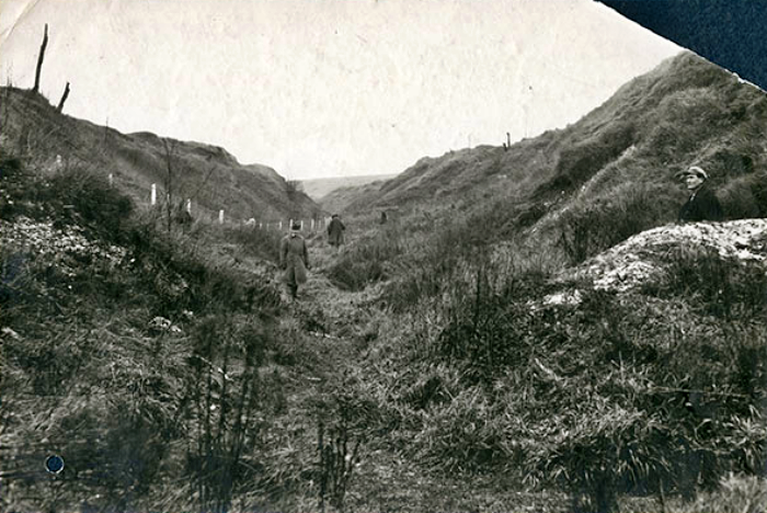
1926; Three men in Y Ravine. Identified on reverse: A. E. Canning of St. John's (left).
Y Ravine, a natural depression in the landscape, was a heavily-fortified area that was honeycombed with dugouts that were capable of providing shelter for full platoons. This ravine was held by the German 119th Reserve Regiment of the 26th (Wurttemberg) Reserve Division of the German army [Nicholson, The Fighting Newfoundlander, p. 243]. Known as a formidable fighting division, it was these that the Newfoundland Regiment were facing on 1 July 1916. The ravine was not captured during the "Big Push" of 1st July but fell to the 51st Highland Division in Nov. 1916.
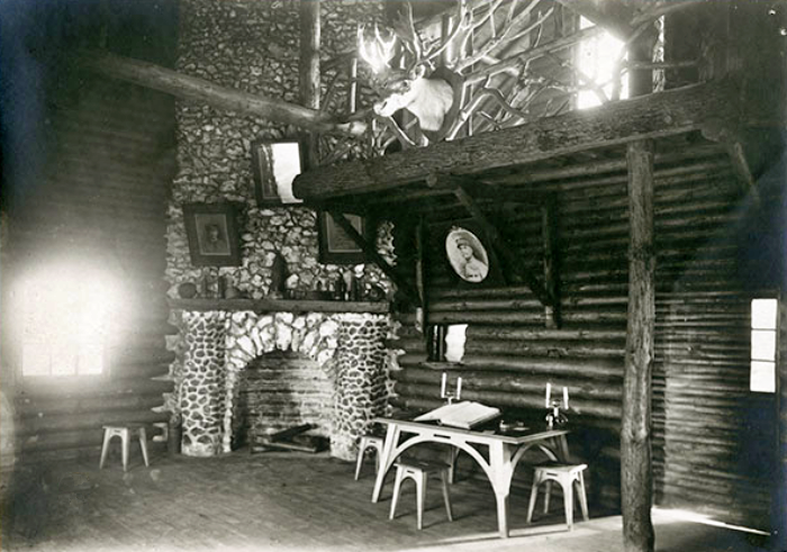
The interior of the Log Cabin, where Earl Haig was received after the dedication ceremony on 7 June 1925. This photograph was possibly taken during the visit of Governor and Lady Allardyce in July 1926.
Note the table with what may be the guest book. Above the table is what appears to be a brass shell casing, a framed portrait of Ferdinand Foch and a taxidermic stag caribou head. A caribou motif was the emblem of the Newfoundland Regiment.
On the mantlepiece are various examples of military memorabilia, including a drum magazine from perhaps a Lewis gun, numerous calibre projectiles, a French or Belgian helmet. Above the fireplace are three framed portraits; one of which is Earl Haig. Crown Copyright (Canada)
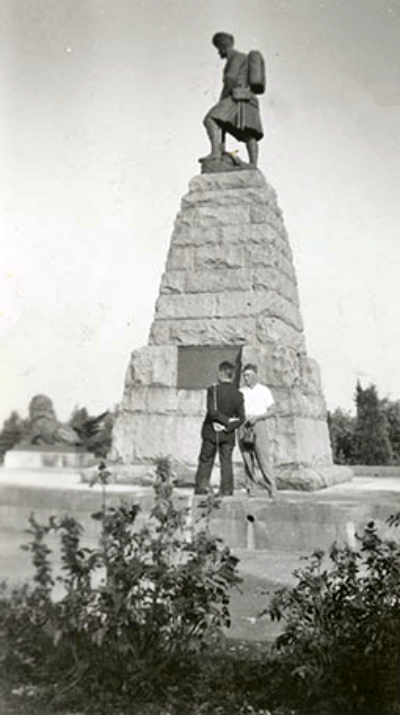
1930's; R.H.K. Cochius (left) with an unidentified man in front of the kilted highlander statue, memorial to the 51st. Highland Division. The memorial was erected to commemorate the capture of this position on 13 November 1916 by the 51st Division.
The statue was modelled on Company Sergeant Major Robert Bowen of the Highland Light Infantry [Christie, For King and Empire: The Newfoundlanders in the Great War, 1916-1918, pp. 35-36].
R.H.K. Cochius was the landscape architect who designed the memorial parks that were erected to honour the Royal Newfoundland Regiment's role in the Great War. Crown Copyright (Canada)
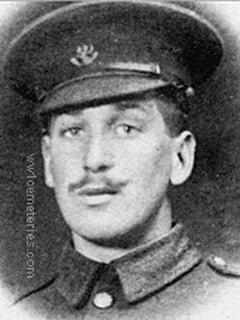
443 Lance Corporal
John Joseph Ellis
Newfoundland Regiment
1st July 1916, aged 22.
Son of John Joseph and Annie Ellis, of 359, South Side Rd., St. John's.
John Joseph Ellis
Newfoundland Regiment
1st July 1916, aged 22.
Son of John Joseph and Annie Ellis, of 359, South Side Rd., St. John's.
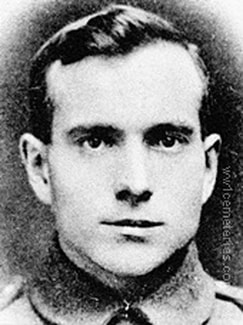
1858 Private
Gordon Etheridge
Newfoundland Regiment
1st July 1916, aged 24.
Son of John and Priscilla Etheridge. of Champneys East, Trinity.
Gordon Etheridge
Newfoundland Regiment
1st July 1916, aged 24.
Son of John and Priscilla Etheridge. of Champneys East, Trinity.
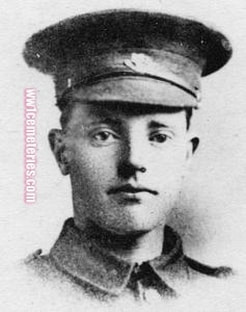
1799 Private
George Hollett
Newfoundland Regiment
14th April 1917, aged 23.
Son of William and Charlotte Hollett, of Port au Bras, Burin.
George Hollett
Newfoundland Regiment
14th April 1917, aged 23.
Son of William and Charlotte Hollett, of Port au Bras, Burin.
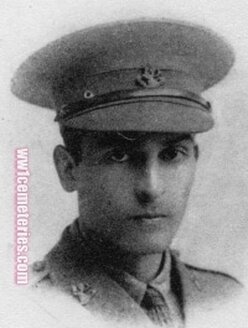
Lieutenant
Robert Palfrey Holloway, Mentioned in Despatches
Newfoundland Regiment
14th April 1917, aged 30.
Son of Robert Edwards and Henrietta Holloway, husband of Agnes Isobel Holloway, of 115, Summer Hill Avenue, Toronto, Ontario, Canada.
Robert Palfrey Holloway, Mentioned in Despatches
Newfoundland Regiment
14th April 1917, aged 30.
Son of Robert Edwards and Henrietta Holloway, husband of Agnes Isobel Holloway, of 115, Summer Hill Avenue, Toronto, Ontario, Canada.
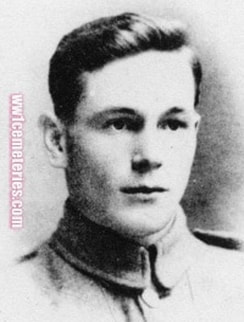
2551 Private
Aubrey Holmes
Newfoundland Regiment
14th April 1917, aged 22.
Son of Henry Holmes, of Springdale, Halls Bay.
Aubrey Holmes
Newfoundland Regiment
14th April 1917, aged 22.
Son of Henry Holmes, of Springdale, Halls Bay.
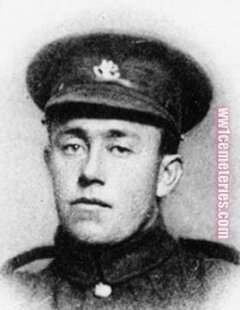
2865 Private
James Leonard
Newfoundland Regiment
14th April 1917
Son of Thomas Leonard, of British Harbour, Trinity.
James Leonard
Newfoundland Regiment
14th April 1917
Son of Thomas Leonard, of British Harbour, Trinity.
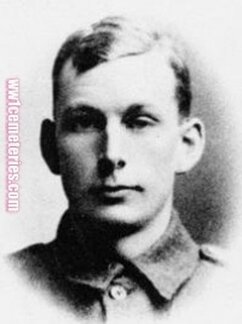
665 Private
Josiah H. Penney
Newfoundland Regiment
1st July 1916, aged 26.
Son of Josiah and Anna Penney, of Carbonear.
Josiah H. Penney
Newfoundland Regiment
1st July 1916, aged 26.
Son of Josiah and Anna Penney, of Carbonear.
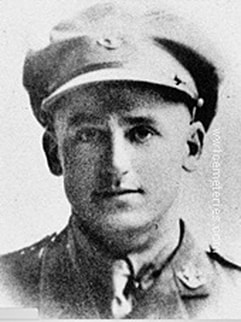
Second Lieutenant
Samuel R. Smith
Newfoundland Regiment
14th April 1917, aged 27.
Son of John Smith, of Harbour Briton, Fortune.
Samuel R. Smith
Newfoundland Regiment
14th April 1917, aged 27.
Son of John Smith, of Harbour Briton, Fortune.
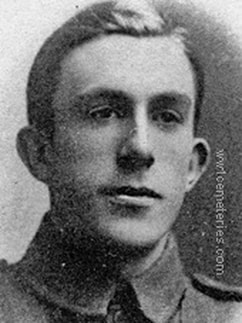
685 Lance Corporal
Frederick Snow, M. M.
Newfoundland Regiment
1st July 1916, aged 21.
Son of George and Dinah Snow, of 116, Pleasant St., St. John's.
Frederick Snow, M. M.
Newfoundland Regiment
1st July 1916, aged 21.
Son of George and Dinah Snow, of 116, Pleasant St., St. John's.

